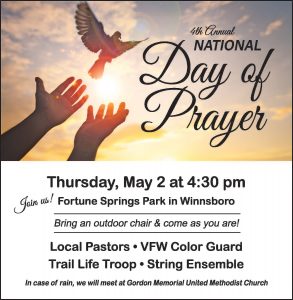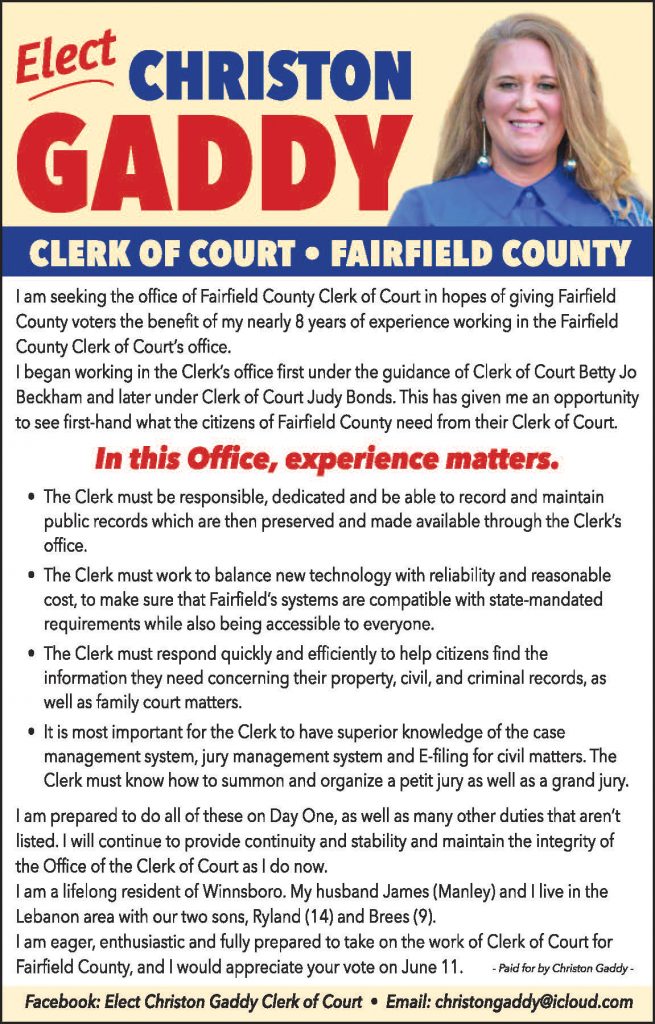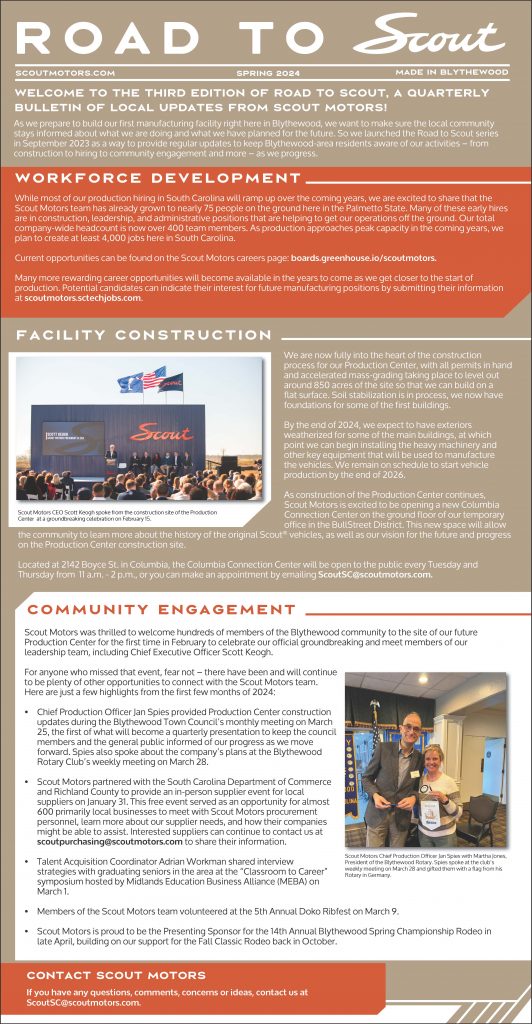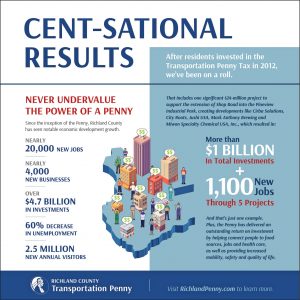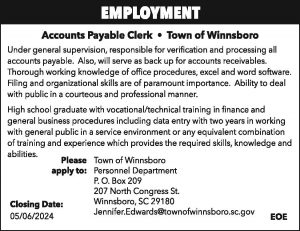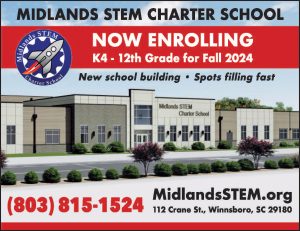WINNSBORO (Nov. 3, 2016) – Fairfield County’s latest Strategic Plan was unveiled two weeks ago during a special called Council meeting, but it was not prefaced with much fanfare nor was it followed with much enthusiasm from Council members.
The plan was created and presented by T.Y. Lynn International, a company hired by the County in early 2014, after a search effort and recommendation by the Central Council of Governments at the County’s behest.
Following the 30 minute or so general overview of the plan on Oct. 18, members of Council expressed frustration with the plan as presented by David Gjertson, Project Manager for the plan.
Councilman Marion Robinson (District 5) was critical that the Fairfield County map in the plan included the Town of Blythewood and that there were so many references to Blythewood during the presentation. Councilwoman Mary Lynn Kinley (District 6) and Councilman Kamau Marcharia (District 4) said they were overwhelmed with the amount of information and suggested a simple timeline could make the plan easier to follow and decipher. Councilman Dan Ruff (District 1) questioned whether the County would actually get $300,000 of benefit from the plan.
Councilman Billy Smith (District 7) pointed out that little if any of the plan was devoted to education even though there had been considerable input about the county’s education system during community meetings this past year. Chairwoman Carolyn Robinson (District 2) said she would like to see the grammatical errors and incomplete sentences and duplications in the document cleaned up. County Administrator Jason Taylor suggested giving more information about some subjects that were of more importance to the County, such as sewer solutions, which only commanded a half page, and less information about issues the County had little control over, such as providing internet to the entire county, to which four pages were devoted.
They each expressed a desire to have more time to look over the plan as a council and with other key participants including officials from other Fairfield County towns and sitting down with the project team to answer questions.
While the 200+ page document is divided into four parts – Overview, Fairfield County in 2016, Fairfield County 2035 and Implementation, Gjertson focused on Part III, Fairfield County 2035, which deals primarily with the plan’s vision for the county.
“The goal of economic sustainability in Fairfield County,” Gjertson said, “is to create a well-diversified economy that builds upon the county’s current strengths, economic assets and existing population’s skills to attract job opportunities.”
He said Council should think in terms of environmentally responsible and innovative industries in order to redefine the county’s image as a destination for green and clean investment. He stressed, however, that the plan was not just about economic development but about community development as well.
Throughout the presentation, Gjertson emphasized the importance of promoting the county’s assets – tourism, historic architecture, rural beauty, farmland and open spaces, and the need to develop a distinctive and attractive physical environment in the county in general and in the Town of Winnsboro, specifically.
The plan stated that “Congress Street, located in the urban core of Winnsboro, currently presents a negative image and acts as a significant barrier in the redevelopment and economic development of Fairfield County.” Besides a general HGTV-type makeover of the downtown storefronts, the plan suggests fewer traffic lanes through the town and a landscaped median and streetscape amenities such as decorative paving and street furniture.
Gjertson talked about ways to raise the livability quotient with higher levels of public services and facilities. He also suggested workforce housing for County employees, created, perhaps, in the Mt. Zion school building, the Mill District and in the area of the new mega-industry property along I-77.
A recurring theme in the plan is branding and ways to bring visitors to the county, such as connecting with the Heritage Trail.
“Make sure you have something to show you are moving forward,” Gjertson told Council.
He said that while the big projects could take years and millions of dollars to complete, some things could be done sooner and at less cost, such as the creation of attractive gateway monuments at all the major highway entrances to the county. He showed an example of a gateway monument made from blocks of the county’s readily available blue granite.
The plan also covered areas such as health care, recreation, possible uses for Mt. Zion Institute, transportation needs and solutions.
Gjertson said the overall vision for the plan is for the county, in 2036, to be a network of urban and rural communities; a regional economic center; a balanced transportation system linking highways, transit, greenways, bikeways and sidewalks into a seamless mobility network and an age-friendly place that offers safe, inclusive and diverse neighborhoods with vibrant public spaces for all its residents and visitors.
“And the vision is that the county will be a model of collaborative planning. But that can be a sticking point because you’ve got communities within the county that sometimes need to work in concert with the county as a whole,” Gjertson said.
At the end of the meeting, Smith thanked the members of the citizen committee for their service.
“I know you spent many hours and had a lot of input to the plan,” Smith said, “and we appreciate that.” Kinley asked for the committee members in attendance to stand.
The Strategic Plan as it was presented to Council is available on The Voice’s website at blythewoodonline.com. At least one other update is expected before the plan is approved.



